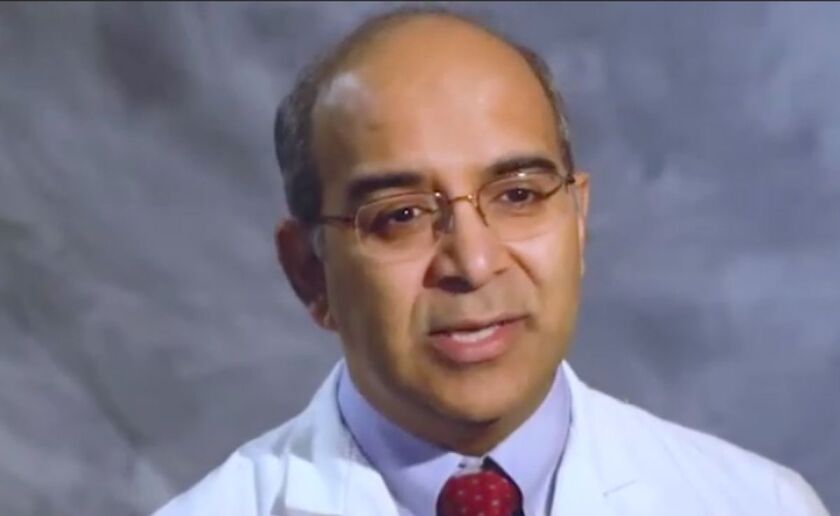Debbie Davis was profoundly unlucky 28 years ago when she was diagnosed with breast cancer as a newlywed.
Things got even worse six years later when her cancer advanced to Stage 4. Her son was then 4 years old.
But she’s been incredibly lucky ever since. As her tumor evaded one drug after another, new treatments kept coming.
Today, her remaining cancer cells are bombarded with chemotherapy from the pills she pops every day — but she still has all of her hair, and she feels fine.
“Ninety-five percent of my life is the same as if I didn’t have cancer right now,” says Davis, 62, of St. Louis, who dedicates her free time to breast cancer advocacy. “It doesn’t really ever go away. They can just stop it from growing.”
Davis is unusual because of her longevity with cancer. But that’s changing. As drug treatments improve, more people with breast cancer are living longer and with a better quality of life.
“For many subtypes of breast cancer, while we still have a long way to go, we’ve made really quite dramatic and meaningful improvements,” says Dr. Steven Isakoff, director of breast cancer clinical research at Massachusetts General Cancer Center in Boston.
Doctors are moving away from high-dose chemotherapy to more targeted treatment approaches, based on the particular characteristics of patients’ tumors, says Dr. Ron Bose, Davis’ physician at Washington University School of Medicine in St. Louis.
Bose says some of the progress has resulted from a deeper understanding of cancer biology — 50 years of scientific work, which began in 1971 with the declaration of the ”War on Cancer.”
Some of it can be credited to inexpensive genetic sequencing that provided insights into tumors and sped drug development.
And some comes from financial incentives driving drug companies to spend billions of dollars developing therapies, says Dr. Debasish Tripathy, chairman of the department of Breast Medical Oncology at the University of Texas MD Anderson Cancer Center in Houston.
In the past few years — even in just the past month — advances have come in all three major subtypes of breast cancer, according to Tripathy and others.
New treatments enable people with early-stage disease to avoid a recurrence and those with advanced cancer to stop counting their future in months.
“The challenge we have ahead of us is to best combine all of the methods that we have available,” Isakoff says.
Here’s a rundown of the most significant recent developments by tumor type, according to a handful of breast cancer researchers, as Breast Cancer Awareness Month is underway:
HER2-positive tumors
A protein called HER2 sits on the surface of many cells, telling them to grow more quickly and resist dying.
n normal times, HER2 helps cells survive stress, says Dr. Ian Krop, a breast cancer specialist at the Dana-Farber Cancer Center in Boston. In about 20% of breast cancers, though, there is too much of this protein, allowing the cells to grow aggressively.
In the early 1990s, the drug Herceptin from Genentech was developed to stick to cells and block the HER2 protein. Its success dramatically improved care for people with this type of tumor.
There are eight drugs that target HER2, four of which have been approved in the past 21 months, Krop says. Another is likely to be approved soon. Having so many options means that patients who don’t do well on one can try another.
The new drugs — called antibody-drug conjugates — carry small payloads of chemotherapy directly to the HER2 tumor cells. This lets doctors increase doses of toxic treatments, often without the horrible side effects often associated with chemo. Krop describes them as “guided missiles.”
“Why give regular chemo that goes everywhere when you can hook it up to the antibody and take it where you want it to go?” Krop says.
The first antibody-drug conjugate, called TDM1, was developed in 2012. The latest one, T-DXd or Enhertu was shown last month to triple how long a patient’s advanced cancer stayed under control and more than doubled the percentage of patients who had substantial shrinkage of their tumors, Krop says.
The drugs are expensive but widely available and also being tested on other tumors, including gastric cancers, he says.
The next step, Tripathy says, will be to test these drugs in earlier-stage cancers, to see whether they can prevent recurrences.
Estrogen receptor-positive tumors
About 65% of breast cancers are hormone-receptor-positive, HER2-negative tumors. Blocking estrogen in these patients can provide years of remission, Tripathy says.
Those with advanced estrogen receptor-positive breast cancers that are inoperable or which have spread to other organs are largely incurable despite treatment options.
Data presented recently showed that adding the drug Kisqali from Novartis extended postmenopausal patients’ lives by more than a year compared with endocrine therapy alone. More than half of the patients survived at least five years past their diagnosis and some close to nine.
The drug, which normally has few side effects, works by blocking enzymes called CDK4 and CDK6, stopping fast-growing cancer cells from replicating.
Triple negative tumors
Some tumors have neither estrogen nor HER2. Until recently, these were the hardest to treat, with the worst prognosis.
“This was a cancer that was defined not by something it has but by what it lacks,” Isakoff says.
Cancer immune therapies and a few other drugs have begun to change the landscape for patients with triple negative breast cancer in advanced and early stages.
A drug from Gilead called Trodelvy, approved in April 2020 and used on patients who have already tried two chemotherapy drugs, has been found to extend survival by more than a year. It’s an antibody-drug conjugate, which means it targets cancer cells and delivers chemotherapy directly to tumor cells.
“That drug has blown past what we had accepted as overall survival for triple negative breast cancer and has dramatically improved it,” says Isakoff, who specializes in treating triple negative breast cancers. “That’s been a real game changer.”
Immunotherapy shows tremendous promise against triple negative breast cancer in combination with chemotherapy. As the chemo kills cancer cells, the immune system — which had seen the cancer cells as the body’s own cells and didn’t attack — begins to recognize them as abnormal.
“So the immune system now can kill cells that are your own body’s cells,” says Dr. Larry Norton, medical director of the Evelyn H. Lauder Breast Center at Memorial Sloan Kettering Cancer Center in New York. “That combination has made an enormous difference” in some patients.
One immunotherapy, Tecentriq, by Genentech, failed to show substantial benefit in triple negative patients. Another drug, Keytruda, from Merck, was shown to reduce recurrence for high-risk patients early in their disease. It’s too early to know whether it will extend survival. Keytruda is given along with chemotherapy for six months before breast surgery, then alone for six months.
BRCA gene mutations
Drugs called PARP inhibitors have been shown effective for people with all breast cancer subtypes who carry genetic mutations on the BRCA1 or BRCA2 gene.
Normally, these genes correct mistakes as DNA makes copies of itself. In people with mutations in BRCA1 and BRCA2, the error-correcting system doesn’t work well, allowing genetic mistakes to accumulate and tumors to begin.
PARP inhibitors actually add to the mutations.
“If you damage the PARP process with an inhibitor, the cell has no means of repairing DNA,” Norton says.
The body notices the damage and triggers the cell’s self-destruction mechanism.
For people with this genetic mutation, PARP inhibitors are even more effective than chemotherapy, Norton says: “That’s a very exciting new approach.”
Though most oncologists have been wary of declaring a cure for cancer, Norton says he thinks it’s “an extremely feasible goal” to cure someone of breast cancer if the definition of cure is “a resumption of normal life” for a normal lifespan. In other words, to keep someone alive long enough to die from something else.
Read more at usatoday.com









